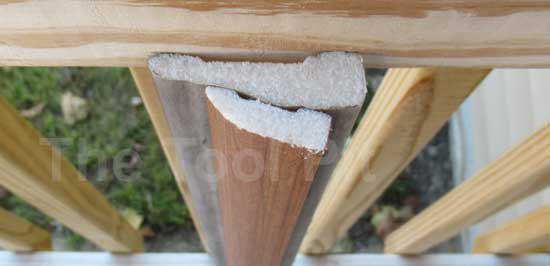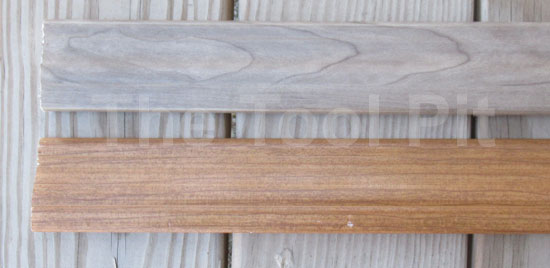Polystyrene Trim Pros and Cons
Wood trim is the most popular option with our customers, but we recently installed a few pieces of pre-finished polystyrene trim and found some advantages and disadvantages over wood trim.
What is polystyrene trim?
Most foam trim moldings are constructed with a rigid plastic material called polystyrene. It probably got its name because it's made by polymerizing styrene (how original). The two main products are expanded polystyrene (EPS) or extruded polystyrene (XPS), and most of the polystyrenes are made up of almost 95% air, which is why they're so light and easy to cut with a handsaw.
EPS is used to make coffee cups and other disposable food containers, and XPS is used to make building insulation. The most well-known XPS insulation is Styrofoam™, but the word Styrofoam is a brand name trademarked by DowDuPont® and can't be applied to any other XPS products. EPS foam is the correct term when referring to products such as foam coolers, foam coffee cups, or other forms of expanded polystyrene.
Can polystyrene be used for exterior trim
Expanded polystyrene is made up of very small styrene pellets, and these pellets have very small gaps between the pellets. If the polystyrene trim is used outdoors, this network of small gaps will eventually fill with water. If you live in the North as we do, the water in those small gaps will freeze in winter, and the ice expansion can cause the polystyrene to split or spall. So no, polystyrene trim can't be used for exterior trim unless specifically stated by the manufacturer. The image below shows a cutaway view of the polystyrene foam trim:

Cutting polystyrene trim
The installation process for high-density polystyrene trim is basically the same as for wood trim - it can be nailed, glued or a combination of both. It gets cut, mitered, and coped in exactly the same way. The job only called for a few pieces of window casing so we used a miter box and a hand miter saw instead of hauling out the power miter saw. The polystyrene trim is lighter than wood so it cut easier, and although I don't have any scientific evidence, I'm guessing the thinner veneer won't dull the saw blade as quickly as painted trim would.
Pre-finished or painted polystyrene
There are different brands of polystyrene trim; some trim is plain white and some trim is pre-finished with a thin veneer - either a solid color or woodgrained. You can still paint the pre-finished polystyrene trim, but it will need to be primed first, then painted. The white polystyrene doesn't usually need to be primed first. The image below shows three pieces of polystyrene trim from Lowes - the brown piece is called 'Russet' trim and there's one piece of 'Gray' trim.

Advantages of polystyrene trim:
- less expensive than most wood trim, especially clear hardwood trim
- very easy to cut with a handsaw or coping saw
- some polystyrene trim comes pre-finished, but it can also be painted
- less susceptible to expansion and contraction than wood
- some brands are made from recycled materials
Disadvantages of polystyrene trim:
- usually limited to shorter lengths, typically 7-8 feet
- thin veneer can get scratched when sanding
- limited colors and patterns, but can be painted
- pre-finished trim is difficult to color match when filling gaps and nail holes - our Polystyrene Finishing article covers more on finishing the polystyrene trim
Thumbs up for polystyrene
The finished polystyrene trim was very easy to work with, and the homeowner is happy with the pre-finished veneer grain. A contractor can't ask for much more than that.

